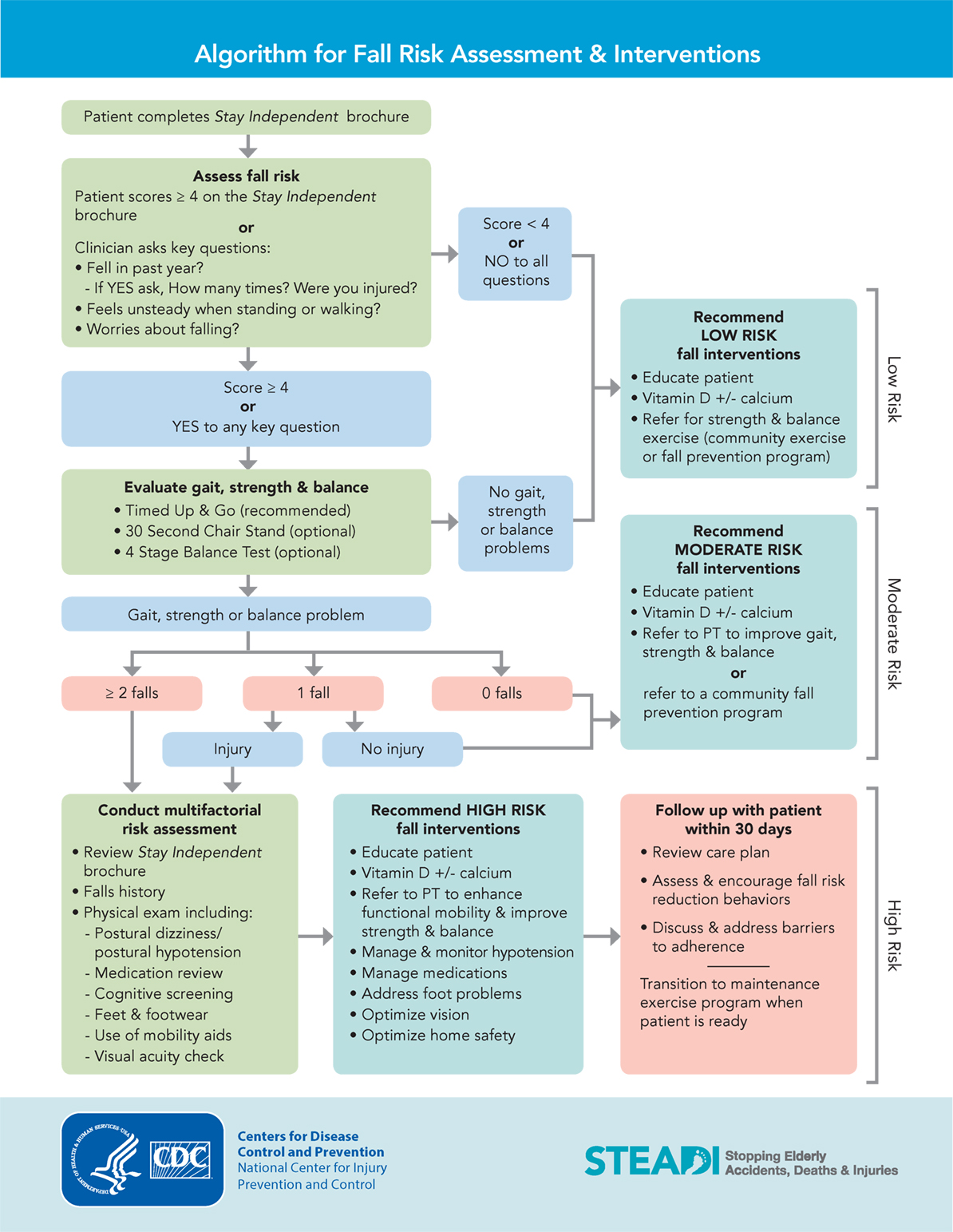Some Known Incorrect Statements About Dementia Fall Risk
Some Known Incorrect Statements About Dementia Fall Risk
Blog Article
The Ultimate Guide To Dementia Fall Risk
Table of ContentsRumored Buzz on Dementia Fall RiskDementia Fall Risk Can Be Fun For EveryoneThe Greatest Guide To Dementia Fall RiskNot known Incorrect Statements About Dementia Fall Risk
A loss danger evaluation checks to see how likely it is that you will drop. The analysis typically includes: This includes a series of concerns regarding your general health and wellness and if you have actually had previous drops or issues with balance, standing, and/or walking.Treatments are suggestions that may lower your threat of falling. STEADI includes 3 actions: you for your risk of dropping for your danger factors that can be boosted to try to stop falls (for instance, equilibrium problems, impaired vision) to decrease your danger of dropping by making use of efficient techniques (for example, giving education and sources), you may be asked numerous inquiries consisting of: Have you fallen in the past year? Are you worried concerning falling?
You'll sit down again. Your copyright will inspect for how long it takes you to do this. If it takes you 12 seconds or even more, it may imply you go to greater threat for a loss. This examination checks toughness and equilibrium. You'll sit in a chair with your arms crossed over your breast.
The positions will obtain harder as you go. Stand with your feet side-by-side. Relocate one foot halfway ahead, so the instep is touching the large toe of your other foot. Relocate one foot fully in front of the various other, so the toes are touching the heel of your various other foot.
Some Ideas on Dementia Fall Risk You Should Know
A lot of falls occur as an outcome of several contributing variables; therefore, managing the threat of dropping starts with identifying the elements that add to drop danger - Dementia Fall Risk. A few of the most pertinent danger aspects include: History of previous fallsChronic medical conditionsAcute illnessImpaired stride and balance, reduced extremity weaknessCognitive impairmentChanges in visionCertain risky medicines and polypharmacyEnvironmental elements can additionally raise the risk for falls, consisting of: Insufficient lightingUneven or damaged flooringWet or unsafe floorsMissing or harmed hand rails and get hold of barsDamaged or incorrectly equipped tools, such as beds, mobility devices, or walkersImproper use assistive devicesInadequate supervision of individuals living in the NF, including those who display hostile behaviorsA effective autumn risk monitoring program requires a detailed clinical evaluation, with input from all participants of the interdisciplinary group

The care plan should likewise consist of interventions that are system-based, such as those that advertise a secure setting (ideal lighting, hand rails, get bars, and so on). The effectiveness of the interventions ought to be evaluated periodically, and the treatment strategy changed as required to mirror modifications in the autumn threat evaluation. Carrying out a fall threat management system using evidence-based ideal practice can minimize the frequency of drops in the NF, while restricting the potential for fall-related injuries.
Our Dementia Fall Risk PDFs
The AGS/BGS standard advises evaluating all you could try these out adults aged 65 years and older for autumn danger yearly. This screening is composed of asking people whether they have actually fallen 2 or even more times in the past year or looked for clinical interest for an autumn, or, if they have not dropped, whether they really feel unsteady when walking.
Individuals who have actually fallen once without injury should have their balance and gait evaluated; those with stride or equilibrium abnormalities must obtain added assessment. A background of 1 fall without injury and without gait or balance issues does not require further analysis past ongoing yearly loss risk testing. Dementia Fall Risk. A loss threat analysis is called for as component of the Welcome to Medicare assessment
.png)
Dementia Fall Risk - Questions
Recording a drops background is one of the top quality indicators for autumn prevention and management. Psychoactive medications in specific are independent predictors of falls.
Postural hypotension can commonly be relieved by lowering the dosage of blood pressurelowering drugs and/or stopping medications that have orthostatic hypotension as a negative effects. Use of above-the-knee assistance pipe and resting with the head of the bed elevated might also lower postural reductions in blood stress. The suggested aspects of a fall-focused checkup are displayed in Box 1.

A TUG image source time above or equal to 12 secs recommends high loss danger. The 30-Second Chair Stand examination examines reduced extremity toughness and equilibrium. Being unable to stand up from a chair of knee height without making use of one's arms shows raised autumn danger. The 4-Stage Balance test examines fixed balance by having the person stand in 4 settings, each considerably more tough.
Report this page